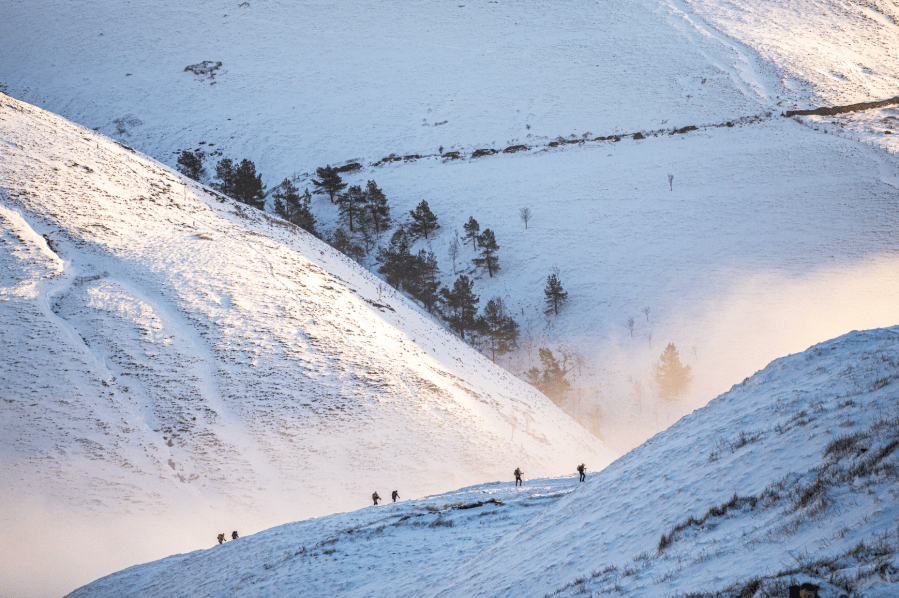The Pennine Way turns 60 this Spring. To celebrate, Hanna Lindon asked completers of England’s first National Trail to share their experiences of walking, running, dancing and singing their way along its 268-mile length.
Main image: Competitors in the Montane Winter Spine Race 2025 climb the Pennines | Credit: Jamie Rutherford for Montane Spine Race
On 22 June 1935, the Daily Herald published an article that would change the face of English walking culture. Written by British journalist and activist Tom Stephenson, it called for “something akin to the Appalachian Trail – a Pennine Way from the Peak to the Cheviots”. Stephenson based his case for a new long-distance trail on a letter written to the newspaper by two American women. The pair were planning a walking holiday in England, and they wanted to know if the country had anything similar to the USA’s 2000-mile Appalachian Trail. In his eloquent and now famous reply, entitled ‘WANTED – A Long, Green Trail’, Stephenson painted a scathing contrast between the women’s native ‘Land of Liberty’ and the English countryside.
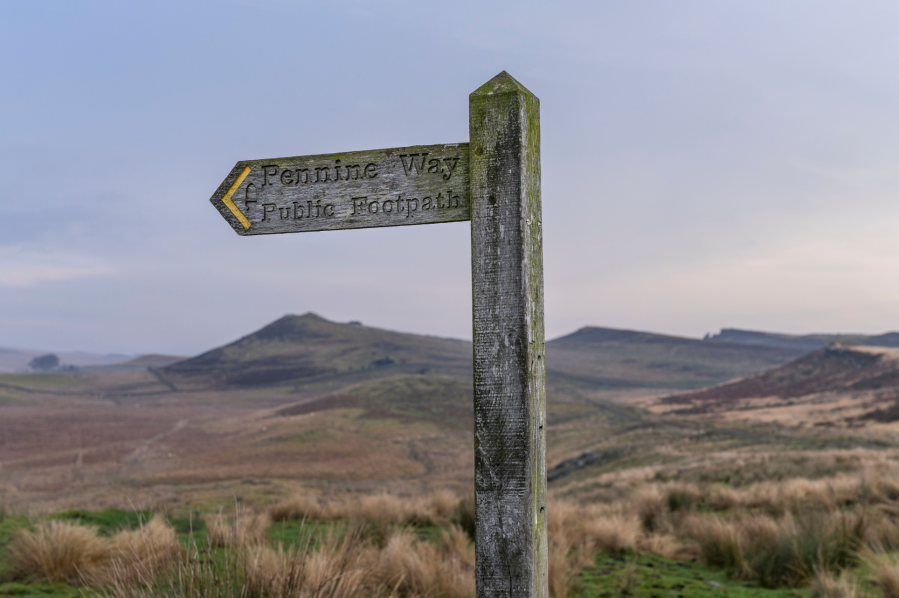
“What will our visitors think,” he asked, “of one of the most prevalent features in our landscape – ‘Trespassers Will Be Prosecuted’?” He went on to describe his vision for a route that would meander across the Pennines from Edale to the Cheviots. Passing across Bleaklow, Blackstone Edge, Pen-y-ghent and Cross Fell, it would be “no asphalt track, but just a faint line on the Ordnance Maps which the feet of grateful pilgrims would, with the passing years, engrave on the face of the land”.
The route he was describing was, of course, the Pennine Way – England’s first National Trail and a milestone in the right to roam movement. Just as Stephenson hoped, it traces a line down the spine of England, traversing moor, dale, river and bog to link Edale with the Scottish Borders. Since it was officially opened in 1965, this 268-mile route has welcomed thousands of end-to-end walkers every year. Tens of thousands more access its airy heights as day-trippers from the surrounding towns and cities. And, despite being eclipsed in length and total ascent by subsequent National Trails, it’s still one of the most challenging – and the most varied – of them all.

Walking with Stephenson
The Pennine Way celebrates its 60th anniversary this Spring. It took nearly 30 years before the seed planted by that Daily Herald article grew into a reality – and during that time, Stephenson graduated from journalist and civil servant to passionate access campaigner. Roly Smith, author of The Pennine Way (Francis Lincoln, 2011), remembers snatching the opportunity to walk with him on Kinder after the two met at a 1976 Peak District conference.
“He had a mischievous grin and a dry, Lancastrian sense of humour, and he told me all about his introduction to the hills,” Roly recalls. “He was from Whalley in Lancashire – he said that he climbed Pendle Hill one day in his clogs and that it was breathtaking. He saw Ingleborough, Pen-y-ghent, all these hills he’d never known about, and he felt that the whole world was on his doorstep.”
Hidden agenda
The hidden agenda behind the Pennine Way campaign, says Roly, was to open up the Pennines to walkers. “When the route was first proposed, there were 70 miles of rights of way still to be negotiated. In those days, the Peak District moors were a real hot spot for access battles. One of the main reasons [Stephenson] proposed the route was to clear the problem of access on Kinder and Bleaklow.” The idea didn’t go unopposed, even in the outdoors community. There was plenty of resistance from climbers and mountaineers, who were uncertain about the proliferation of ‘routes’ and ‘ways’ that occurred during the mid-to-late 20th Century.
Ultimately, though, the creation of the Pennine Way did almost as much for the access cause as did the 1932 Kinder Mass Trespass. “The creation of long-distance paths was an important part of the 1949 National Parks and Access to the Countryside Act,” explains Roly. “And the Pennine Way was the first – and some would still say the toughest – of those long-distance trails.” Like his hero Tom Stephenson, Roly has never walked the full trail in one go. But then, as he points out, “neither did Wainwright!”
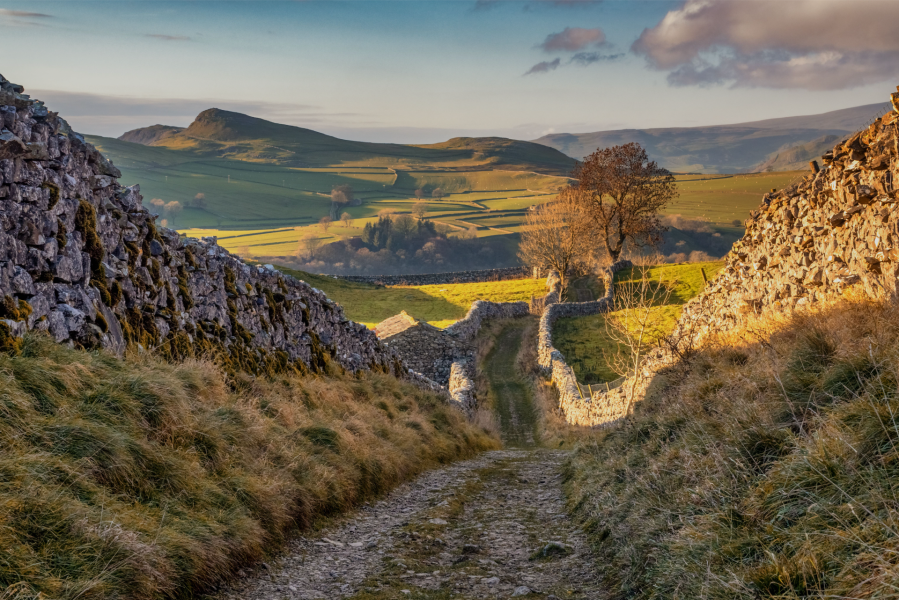
With a full traverse from Edale to Kirk Yetholm taking nearly two weeks, he thinks that dipping in and out of the route’s wonders is the way to go for most people. “The highlights for me would be Kinder Downfall – which is quite exciting when the wind is blowing it backwards – and the point when you emerge at High Cup Nick and the ground just falls away in front of you,” he says. “It’ll always be an important route, not just because it’s the first but because it passes through so much beautiful countryside. And we owe it all to Tom, and to people like him who pioneered it for us.”
The Pennine Way at 60
Just like Roly, outdoor writer and speaker John Burns has a unique perspective on the history of the Pennine Way. The Last Hillwalker author has walked it twice – once in the 1970s, at the age of 18, and once 40 years later. Both times he was joined by his friend Martin Jones. “When we first did it, I think only five or six years had passed since the Pennine Way opened,” he says. “Whoever designed it never anticipated the traffic it was going to get. You’re walking over peat a lot of the time, and it had just turned into a sort of thick, black soup. On Kinder and Bleaklow, we were literally sinking in places up to our knees. And because we were carrying heavy packs, we sort of pitched forwards onto our faces and couldn’t get up. We had to wriggle out of our packs to get back to standing.

“Nowadays a lot of those vulnerable tracks have been paved, so you’re walking on hard surfaces a lot more. Oddly enough, that gave me a lot of problems – I got really bad blisters!”
The other major difference he noticed was in the welcome walkers receive from pubs and other stop-offs along the route. “There was a level of hostility to walkers in those days in certain places. A lot of pubs saw you in your old, battered clothes and your ragged, mud-splattered boots, and they thought ‘these people are impecunious – we’ll get no trade from them’. They really discouraged walkers from coming in. But at some point, they clearly realised that the trail of walkers going past their door had money in their pockets. One of the pubs that wasn’t very keen on us the first time round had changed its name to The Jolly Rambler.”
However the trajectory hasn’t been quite so positive on the accommodation front. John said that, on his second tramp of the Way, he noticed that a lot of the YHA-run hostels he stayed in the first time round had closed. Camping was also less formal back then – he remembers spontaneously overnighting on a farm, where the farmer’s wife invited them into the kitchen and plied them with Famous Five-style bread with lashings of butter and jam whilst her husband snoozed happily by the fire. “Nowadays, you can’t just invite people into your home and feed them for a few bob,” he says.
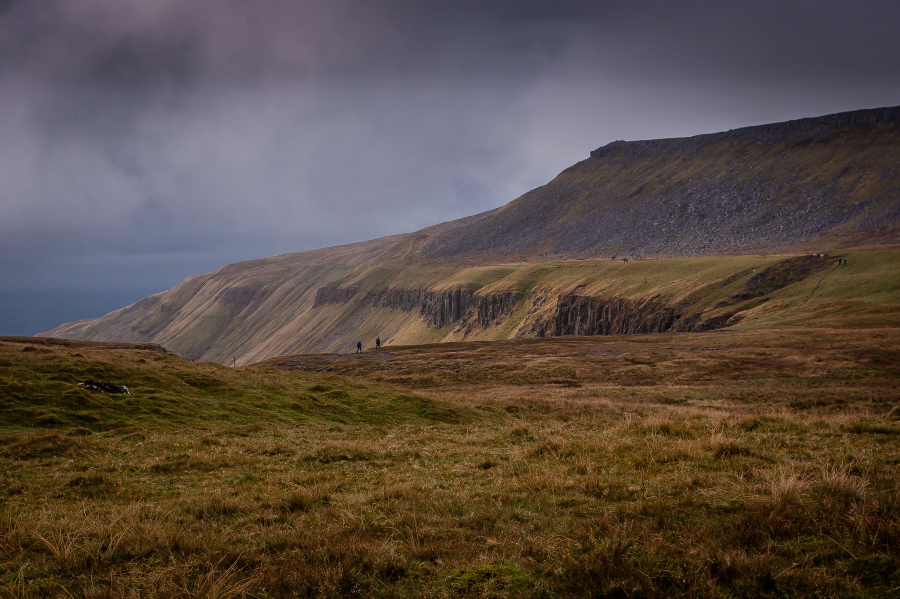
John’s favourite bits remained unchanged – High Cup Nick and Pen-y-ghent – but there were a few surprises the second time round. “I discovered it had got a lot longer than it used to be, and some of the hills were a lot steeper! We had top-of-the-range bodies in those days and bottom-of-the-range gear. The second time, we had top-of-the-range gear and bottom-of-the-range bodies. We didn’t complete it that time – we had to shorten our route as our legs got wearier.”
Still, he says, his enthusiasm for the trail remains undimmed. “It’s such an iconic route, along the spine of Britain. There are lots of other [long-distance paths] now, but the Pennine Way is still special.”
Race to the Borders
That iconic ‘spine of Britain’ status has made the Pennine Way a popular route with trail runners as well as walkers. Since 2012, Montane’s Spine Race (aka ‘the most brutal race in Britain’) has challenged the fleet-footed to complete its full length in the fastest possible time. Mind-boggling records have been set during this endurance fest – Jasmin Paris famously managed it in 83 hours, 12 minutes and 23 seconds despite stopping to express milk for her toddler – but they all pale in comparison to the 58 hours, 4 minutes and 53 seconds managed by American endurance athlete John Kelly.

John’s first encounter with the Pennine Way came as part of a 50-mile ultra marathon in 2019. “That was my first real introduction to bogs,” he says wryly. “I’d seen a bit of it on the Bob Graham and the Paddy Buckley – but out there on the Cheviots I fell in one, and for a minute I honestly didn’t know how I was going to get out. Later in that race, I stepped where there was supposed to be a flagstone, fell straight into a bog, and then another runner stepped in and fell right on top of me. That stuff is like quicksand, but black and mucky.”
Unappealing as that sounds, it didn’t put John off. He took part in his first Spine Race a month later, and in 2020 smashed the previous Pennine Way speed record – held by Mike Hartley for 31 years – to set a new top speed of 64 hours and 46 minutes. In scenes worthy of a Hollywood blockbuster, this record was stolen almost immediately by British ultra runner Damian Hall. It took a final, epic attempt in May 2021 for John to regain his briefly held record, setting another new (and, thus far, unbeaten) time. His most recent Pennine feat came in January, when he took fourth place in the Montane Winter Spine Race 2025.
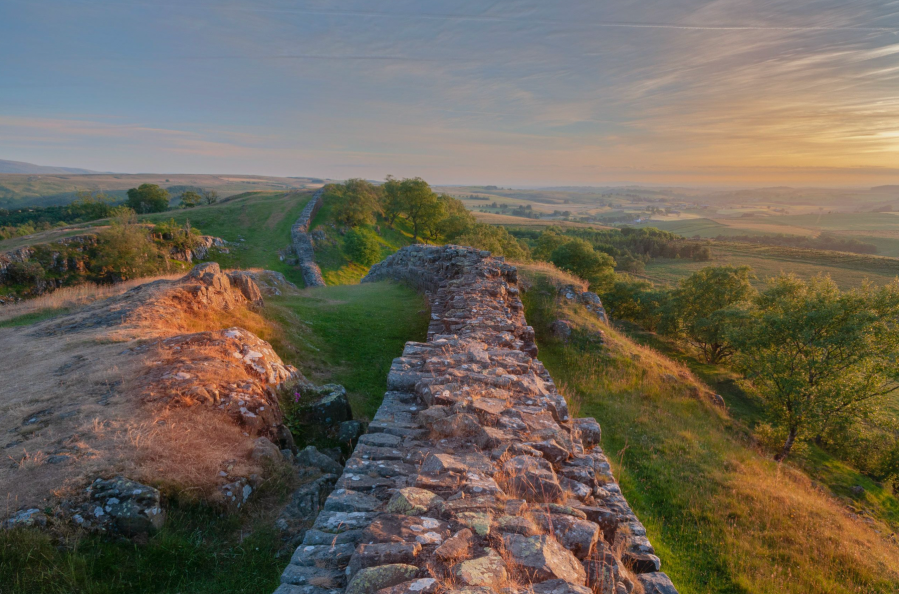
So what is it that keeps drawing him back? “The Pennine Way for me is just a perfect little cross section of England,” he says. “You’re going through different types of terrain, you’re going through wonderful little villages, you’re running along Hadrian’s Wall, and there’s just so much history. It’s such a special thing to me as an American that in the UK you have these public rights of way that cut across the country connecting amazing locations. We have a few long trails, but most of them are isolated and surrounded by private land. Being able to venture 270 miles right up the heart of England is just amazing to me.”
Song and dance
The Pennine Way has inspired cultural feats as well as sporting ones. Back in 2006, movement artists Tamara Ashley and Simone Kenyon undertook the route as part of a 268-mile choreographed performance. “We commissioned six artists to make interventions with us along the way, encountering them as we travelled north,” explains Tamara. “We had performance artists who played music as they walked with us, a visual artist who created these beautiful charcoal prints – even a youth group who wove paper sculptures in the forest.”
It took the pair a month to complete the trail, staying in YHAs and bothies for most of the way and camping north of Hadrian’s Wall. Their experiences formed the basis for a subsequent book and lecture tour. “It was life-changing – definitely a rite of passage,” says Tamara. “It helped form our minds, our views and our values. In our book we chart the emotional journey we went through; and I remember the chair of the Countryside Agency, who came to one of our lectures, comparing our emotional ups and downs to the contours of the trail.”
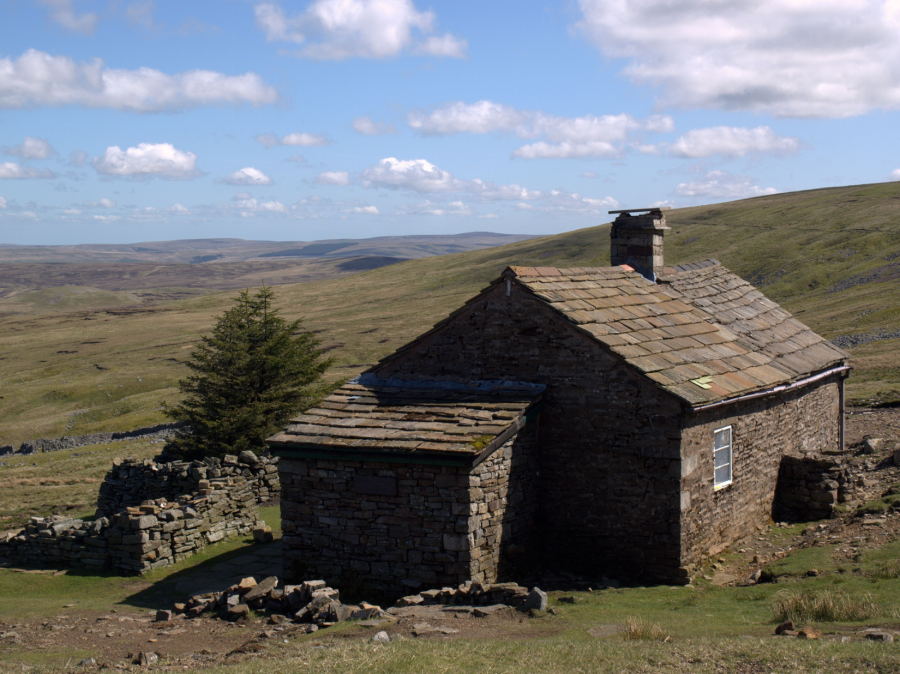
A low point for Tamara was Cross Fell. “I stood on a nail or something in the hostel and had to get stitches in my foot. Then we had a huge walk in front of us and the weather was horrendous. But coming down the other side to Garrigill and then on to Alston felt like we walking into paradise. This violinist came and played with us for six miles, and after the struggles of Cross Fell it felt magical.”
Johnny Campbell is another artist whose work has been inspired by the Pennine Way. His music focuses on themes of nature, land access and connection to the landscape. A previous album featured songs from each northern English county recorded on the highest points of those counties – and now he’s undertaking a 19-day tour of the Pennine Way, carrying his guitar and playing in 17 venues along the route.

“I grew up in the shadow of the Pennines and I see the Pennine Way as the binding identity of the north,” he explains. “I’ve been in touch with the National Trails network and the three national parks the route goes through, and they think it’s fallen a bit out of favour with the newer National Trails that have cropped up. They want to promote it to a different audience. The idea is to perform in unique places and iconic spots like Vindolanda Roman fort, St Oswald’s Church and Tan Hill.” Is he worried about carrying a guitar on his back for 268 miles? “It’s a challenge. But I have plenty of experience of carrying heavy packs, so it’s the rain that’s more of a concern!”
A new hope
For Johnny – and for many who choose to walk its length – the Pennine Way is more than just a ramble. It’s a symbol of freedom, identity and belonging. That’s particularly the case for Anita Sethi, author of I Belong Here: A Journey Along the Backbone of Britain, who decided to take on the route after racial abuse on a TransPennine train left her struggling with anxiety and depression.
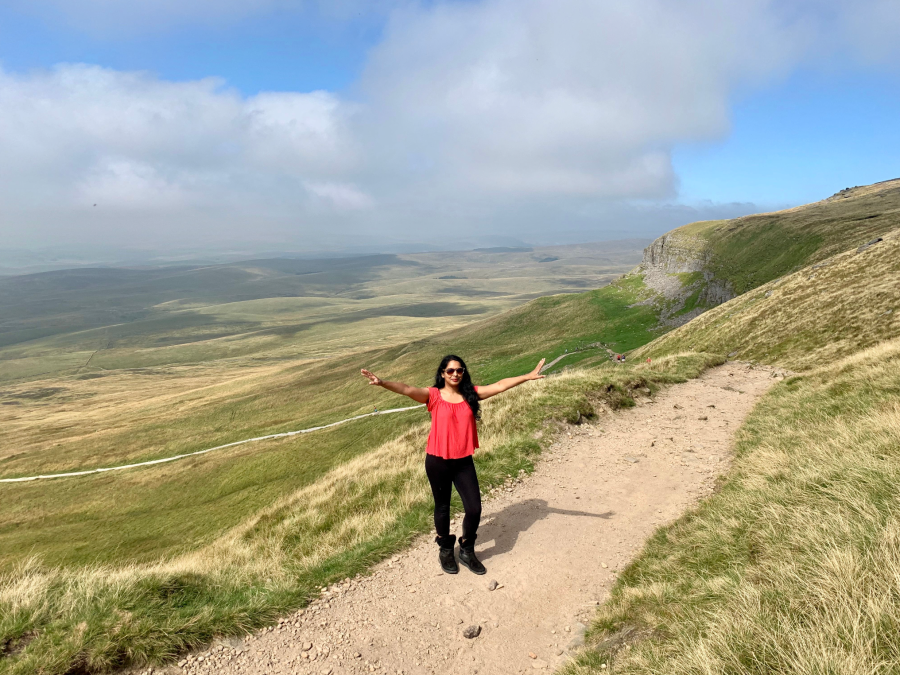
“One day I was looking at a map of that train journey and saw the Pennine range of mountains rising up,” she remembers. “I zoomed closer into the map and saw a place called Hope, and that gave me the courage to journey literally to Hope to begin my adventure. The racist man had told me to “go back to where [I’m] from” and so I did – I’m from the North. I was born and grew up in Manchester, so the Pennines is my local countryside. Walking the Pennine Way was a journey of reclamation. It was a way of saying: I belong here.”
Anita says that tackling the route as Summer changed to Autumn had a transformative impact on her physical and mental health. Despite the journey growing from an experience of “hate and brutality”, she gradually found herself opening up to the kindness of strangers. She was inspired by the scenery: the limestone cliff formations; the peregrines of Malham Cove; the view from the top of Pen-y-ghent. And she came away with a new perspective. “The Pennine Way overturns the stereotype that it’s ‘grim up North’. Far from it! It’s one of the greatest walking trails in the world.”

